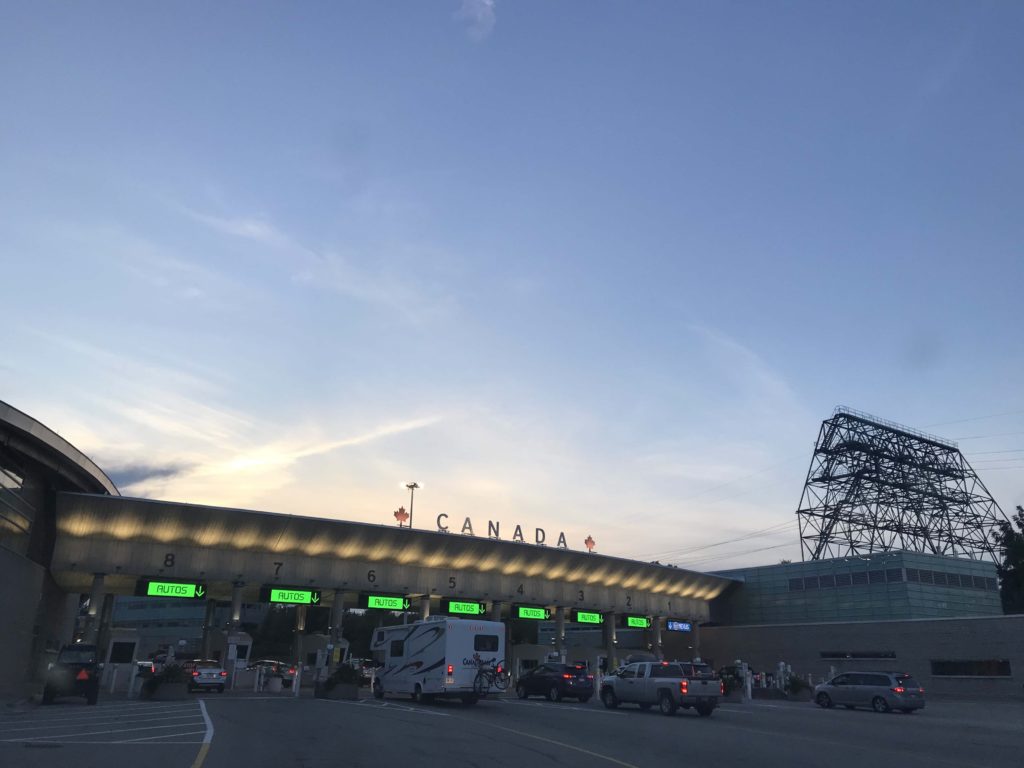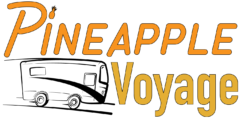This article was co-written by Philip and Angelica of Pineapple Voyage and Bill and Lisa of Adventuring Andersons. Our 2 families will be hosting the 2019 Fulltime Families Canada rally.

So you’re thinking about going to Canada? There are some things that you need to know to make the border crossing and your trip to Canada smooth. Please note that this is not an exhaustive list, but some of the most common issues for fulltime families. This information is current as of the writing of this article.
Passports
Ages 16 and older – Passports, books or cards, are required for adults to cross the Canadian border.
Under 16 – May enter with either their current passports, books, cards or with the child’s birth certificate as long as both parents are present with their passports.
If you have a child who is entering the country with only 1 parent, you must have a signed and notarized letter from the other parent giving you permission to cross the border with the child.
Food
Dairy
You may bring up to 20 kg (approximately 44 lbs) per person of dairy products (cheese, milk, yogurt & butter)
Eggs
Cooked eggs and foods are prohibited.
Plants, fresh fruits and vegetables
Fresh fruits and vegetables are strictly prohibited. Plants have to be declared and inspected. It’s best not to have these items on board when trying to cross.
Fruits
You may bring up to 15 frozen packages or 15 cans per person, but not more than 250 kg (approximately 550 lbs).
Vegetables
You may not bring more than 20 kg (approximately 44 lbs) of frozen or chilled vegetables per person.
Meats
Meats must sealed in original commercially packed packages.
Alcohol
You may bring in ONE of the following into Canada per person of legal drinking age (19+) in all Canadian providences, except Alberta, Manitoba and Quebec (18+).
- 1.5 liters of wine (approximately 2 – 750 oz bottles) OR
- 1.14 liters of liquor (approximately one large standard bottle of liquor) OR
- 8.5 liters of beer (approximately 24 cans or bottles)
Pets
Vaccines
Pet must be up-to-date on their vaccines before entering Canada. The most important of these is the rabies vaccine. If you do not have proof upon entering Canada, your pets will be vaccinated at the border at a cost to you, plus a fine.
Pet Food
Pet food is limited to 20 kg (approximately 44 lbs) and must remain in the original commercially packaged container. On the package, it must state that it is a product of the United States. By bringing pet food across the border, you are agreeing to feed it to your pets ONLY.
Your Equipment
Your vehicle must be free of mud and pest. You may not bring any firewood across the border.
Weapons
Guns are strictly regulated. It is best to leave weapons in the United States to avoid troubles and fines at the border. Other types of weapons, such as tasers, knives, brass knuckles and pepper spray, are strictly prohibited.
For more information about crossing with guns and knives, check out this link.
At the Border…
The biggest thing to remember at the border is to be respectful and answer the border patrol’s questions, but do not volunteer any other information. Be sure to also have your information (passports, pet vaccination records, etc) easily accessible to the driver in your vehicle with you.
Once you’re in Canada, be aware of the following issues:
Money / Banking
Canada uses a different currency than the United States. You may exchange any cash you have at the border or at any bank for a fee. We were able to use our American dollars around Niagra, but once we got much further north restaurants and such would not give us the exchange rate.
When using your debit or credit cards, you will pay for all purchases in Canadian dollars. When the transaction clears, it will clear for the current exchange rate on the date it goes through.
Insurance
Insurance companies typically require that you obtain an additional vehicle insurance card. Canada requires that your insurance card provides more information than a traditional American insurance card.
Cell Phones
American cell phone plans allow you to use ½ GB a day of data in Canada.
Milk
In Canada, milk is sold in bags. Be aware of this and have a pitcher handy to pour your milk into.
Tolls
When traveling in Canada, be prepared that there are some toll roads. These roads are usually clearly marked but do not allow you to pay the tolls there. Most Canadians have transponders in their vehicles for such tolls. If you do not have a registered transponder, you will receive a bill in the mail.
In our case, our GPS routed us from Buffalo up the Queen Elizabeth Way into the Ontario Providence. There were clear signs that it was a toll road, but because it was the most direct route we took it anyway. We actually took it entering and exiting the country. The toll amounts are not listed and are based on where you enter and exit the toll road. Several weeks after we returned home, we received our toll bill in the mail. Our toll for our round trip was approximately $55 USD. It was well worth it in my opinion. The drive along Lake Ontario and Lake Simcoe was absolutely gorgeous!
Please Like and Share us on social media! Also, subscribe to our email list to stay up to date on new posts! Please leave a comment telling us what you think.


